Chapter 01 : Good grooming
IntroductionGood grooming means ensuring neatness and smartness of the body. Having clean clothes and dressing properly are also part of good grooming. Good grooming practices may vary according to culture and may change over time. Good grooming has to be instilled in a person by his or her parents, family members and other community members from childhood and developed through adolescence to adulthood. This chapter will enable you to practise the right procedures for cleaning and taking care of your body during puberty. You will also learn how to take care of your clothes by making simple sewing, repairing worn out parts and attaching buttons. In addition, you will learn how to petform daily, weekly and special cleaning of your bedroom. Finally, you will learn relevant procedures for disposing waste at school and at home.
Cleaning the bodyIt is important to wash our bodies daily to remove sweat, grease and other dirt. Cleaning the body also involves brushing the teeth. Different tools and materials can be used to clean and protect our bodies from diseases such as skin rashes. The tools include soap, a comb, petroleum jelly, and body oil or lotion. Figure 1 shows some of the tools and materials which are used in taking care of the body.
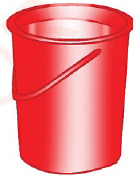 (a) Bucket | 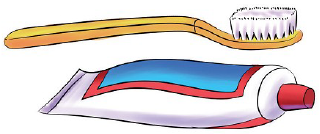 (b) Toothbrush and toothpaste |
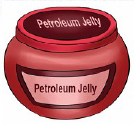 (c) Petroleum jelly |
(d) Towel |
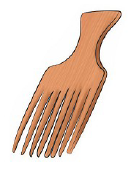 (e) Comb | 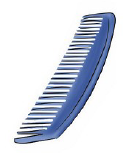 (f) Teasing comb |
Figure 1: Some tools and materials used for taking care of our bodies
The importance of cleaning the body:
It is important to clean your body to prevent infectious diseases. Adolescents are encouraged to take extra care of their bodies because of the changes that occur during puberty. On one hand, adhering to good grooming practices helps the body to grow up healthy and strong. It may also make one look personable and smart. On the other hand, poor personal hygiene can contribute to infectious diseases, unpleasant body odour, social stigma and general ill health.
Steps to be followed in cleaning the body
1. Washing the entire body: Wash the body daily to remove sweat. Use clean water, soap, and a piece of cloth or face towel to rub off dirt. Choose the soap wisely. It should not be too perfumed. Additionally, it should not contain caustic soda which takes away natural oil from the body, leaving the skin dry. When washing, pay attention to areas such as armpits, ears, between toes and fingers as well as all folded areas. Then, rinse the body with clean water to remove soap and dirt. Remember to clean nails and feet as well as the genital and anal areas to avoid bad odour and fungal infections.
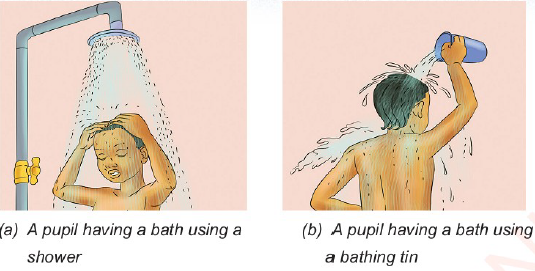 |
| Fig. 2 Pupils having bath |
2. Drying the body: Dry your body thoroughly using a clean piece of cloth or towel. Leaving the body with water may cause bad odour and fungus.
3. Apply petroleum jelly or lotion: This makes your skin healthy and shiny. People with albinism should use special cream to protect their skin from sun rays. If you can afford, use body fresheners such as deodorant on your clean and dry body. This is useful because it prevents unpleasant smell.
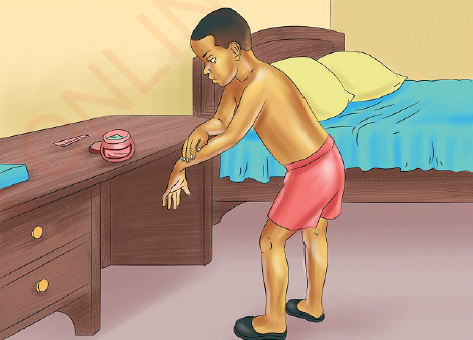 Fig.3 Pupil applying petroleum jelly |
4. Attend the hair: Oil the hair, comb or plait it properly. Your hair should be cut short or plaited frequently.
5. Wear clothes: Wear clean underwear and school uniforms if your going to school. Make sure all buttons and shoelaces have been secured and tied properly.
 Fig. 4 Pupils Dressed Properly |
Exercise
Answer the following questions:
1. List five tools or material used for cleaning the body.
2. What are the steps to be followed when cleaning the body?
3. Why is it important to wash the body?
Personal hygiene during puberty
Puberty is a stage of growth when the body experiences great changes from childhood to adolescent. During this period the body experiences great changes in hormones. These changes develop reproductive organs as well as increase the size of the body and the ability to reason. During puberty, the body produces a lot of sweat. Hence, regular washing of the body is emphasized to prevent unpleasant odour.
The following are signs of puberty in boys:
1. Growth of pubic and underarm hair
2. May experience wet dreams
3. Facial skin acne
4. Sexual feeling
5. Development of different emotions including shyness, arrogance and irritation
6. Unpleasant body odour
7. Maturity of reproductive organs
8. Body growth and muscles become more developed
9.Deep voice
The following are signs of puberty in girls:
1. Growth of pubic and underarm hair
2. Widening of the hips
3. Breast development
4. Maturity of reproductive organ
5. Start of menstruation
6. Smooth skin
7. Developing different emotions such as shyness, arrogance and irritation
8. Unpleasant body odour
9. Facial skin acne
When these changes occur, it is important to exercise a high standard of hygiene. Cleaning the body at this stage is not different from what was discussed earlier, but special attention should be paid to armpits and genital areas. These should be cleaned and dried thoroughly to avoid fungal infections and other related diseases. Hairs around armpits and genital parts should be removed regularly.
When girls start menstruation, it is crucial to have a bath twice a day. If this is not possible, they should clean the genital parts twice a day. During this period, girls need to use sanitary pads to maintain their cleanliness. Different types of sanitary pads are available on the market. Therefore, a girl may use disposable or reusable sanitary pads that are available in her area. Clean soft cloths may also be used insteady of sanitary pads. Girls are required to change sanitary pads regularly to avoid bad smell and health problems. They should carry extra pads to change during the day to keep them dry and clean. They should always wash their hands before and after changing pads. Figure 5 shows examples of sanitary pads.
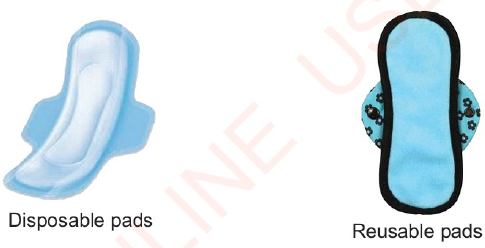 |
| Figure 5: Sanitary pads |
Girls should avoid throwing used sanitary pads anywhere or in the modern toilets as these pads may cause blockage. Used sanitary pads should always be placed in sanitary bins and, thereafter, disposed by burning or placed in waste disposal pits as shown in Figure 6. When they use soft cloths or reusable sanitary pads, girls should make sure that they wash them regularly with clean soapy water and dry them in an open area where there is direct sunlight. Avoid using toilet papers, table napkins, and rags for sanitary protection because such materials may cause infection.
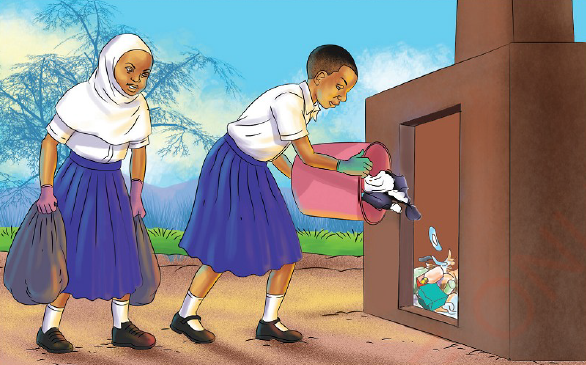 Figure 6 Pupils disposing waste |
Exercise
Answer the following questions:
1. What is the meaning of puberty?
2. Write five signs of puberty in girls.
3. Write five signs of puberty appearing in both boys and girls.
4. Why is it important for girls to change sanitary pads regularly?
Activity 1
Clean the school environment including waste pits, dust bins, and incinerators.
Taking care of clothes Clothes are among the basic needs for human beings; therefore, it is important to take care of them in order to last longer. This will also help to reduce costs of buying new ones. The proper care of clothes includes repairing, washing, ironing, and storing them in a clean and safe place.
Sewing
Sewing is an art of joining two or more pieces of fabric using a needle and thread to make different stitches. Sewing can be done when preparing a new garment or repair a used one. Different tools such as a needle, a pair of scissor, thread and thimble are used in sewing as shown in Figure 7.
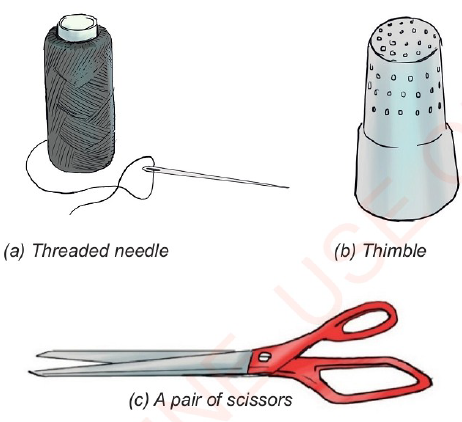 |
| Figure 7: Sewing tools |
Stitches: Stitches are formed by passing a threaded needle under and over the fabric joining together two or more layers of material.
The general rules for working stitches are as follows:
1. Choose the correct stitch for the work to be carried out.
2. Use the appropriate size of the needle and the right type of thread for the material.
3. Fasten on and off securely.
4. Wear a thimble on the middle finger of the hand which is used for sewing. This protects the finger-tip when sewing.
5. Work one stitch at a time.
6. Never use a knot to fasten stitches. The knot may come undone or can tear fine material. It can also cause tiny lumps in seam or hems when the material is pressed.
Types of stitches:
Different types of stitches are used in sewing. These are categorized into two groups, temporary and permanent stitches.
(a) Temporary stitches: Temporary stitches are used to hold fabric temporarily until permanent stitches are made. The stitches are removed as soon as they have served their purpose. The following are examples of temporary stitches:
(i) Even tacking: This is used to hold parts of the garment firmly in place so that permanent stitches may be worked accurately.
(ii) Long and short tacking: It is used on a single fabric for markingout purposes.
(iii) Running stitches: These are used to hold seams and hems in position for stitching. Sometimes the stitches are used for making gathering.
(iv) Tailor's marking: It is used on double thickness of a fabric for marking-out purposes.
(v) Diagonal tacking or Basting: It is used for holding a pleat in position.
Some of the temporary stitches are shown in Figure 8.
Note: Running stitches can be worked on both the right and the wrong side of the material.
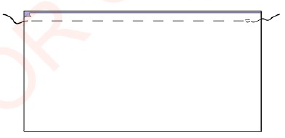 (i) Even tacking stitches | 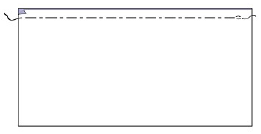 (ii) Long and short tacking stitches |
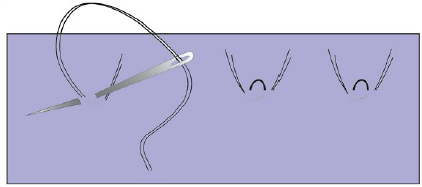 (iii) Tailor made stitches | |
Figure 8 : Temporary stitches
Even tacking stitches
Steps to be followed when working with even tacking stitches
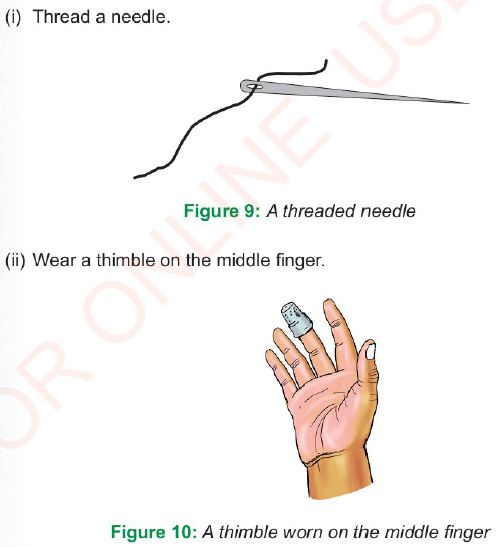 |
 |
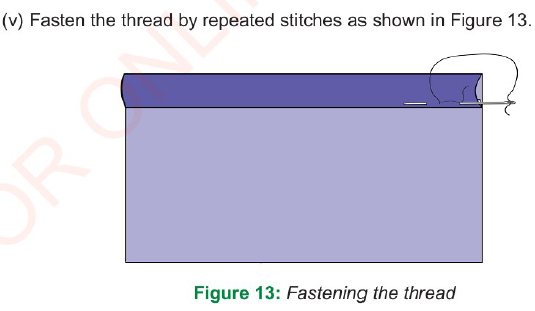 |
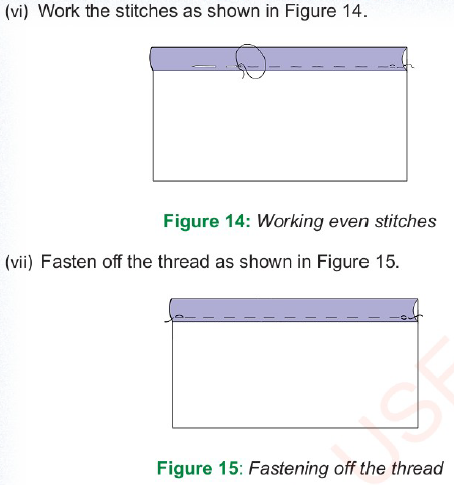 |
(b) Permanent stitches: These stitches are used to hold together two or more layers of the material permanently. They are also used as decoration on garments or articles. Permanent stitches are divided into the following three groups:
(i) Joining stitches
(ii) Neatening stitches
(iii)Decorative stitches
Joining stitches: These are used to join two or more pieces of material together for functional or decorative purposes. The thread used should match with the type of the material used. Examples of joining stitches are backstitches, running stitches, over sewing stitches, machine stitches, and hemming stitches.
Back stitches: These are worked from right to left. The following steps should be followed when working with backstitches:
(i) Prepare two pieces of fabric by cutting the required size and iron them to remove wrinkles, if an , as shown in Figure 16.
 |
(ii) Thread the needle and wear a thimble on the middle finger.
(iii) Work temporary stitches, i.e. even tacking stitches, 1.6 centimetres away from the edge to hold two layers of the material together as shown in Figure 17.
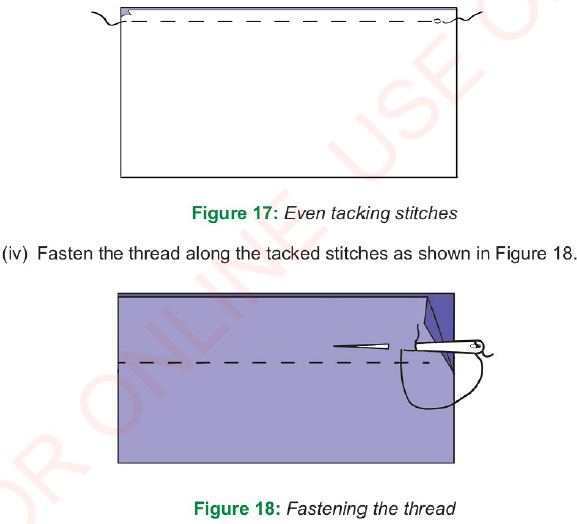 |
(v) Continue working backstitches along the tacked stitches as shown in Figure 19.
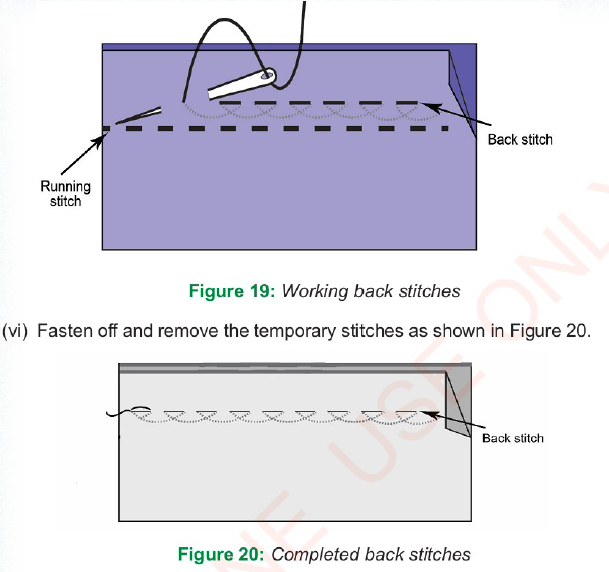 |
(vii) Iron the joined fabric depending on the type of seam.
Neatening stitches: These are used to neaten raw edges in order to prevent them from fraying and to hold hems securely in place. Examples of neatening stitches are hemming, loop, blanket, buttonhole, herringbone, and overcasting.
Hemming stitches: These are used to hold folded edges permanently, and they are worked on the wrong side of material, working from right to left. The hem should be held over the fingers of the left hand when working the stitches. Hemming stitches should be small and even in order to hold the material firmly.
Steps to be followed when working with hemming stitches
(i) Prepare a piece of material to be hemmed.
(ii) Thread the needle.
(iii) Wear a thimble on the middle finger.
(iv) Fold the raw edge to make a small turn as shown in Figure 21.
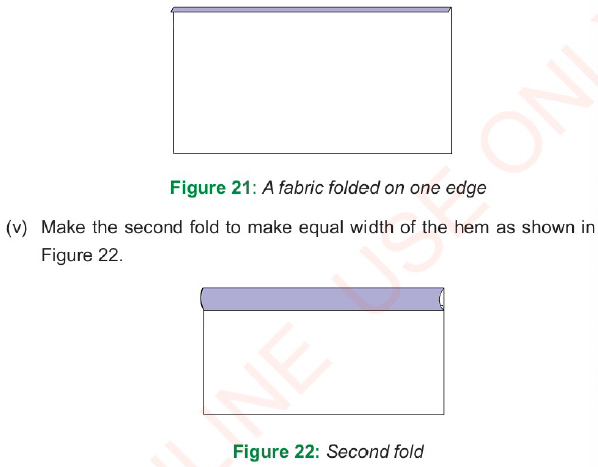 |
 |
 |
Decorative stitches: These are used for decorative purposes on garments and various items such as table linen, pillow cases, bed sheets and sofa sets. Different types of embroidery stitches are used to obtain decorative effects. Examples of these stitches are satin, stem, chain, French knot, herring bone, and feather stitches.
The following rules should be observed when decorating items:
(i) A garment which is not well made should not be decorated.
(ii) The method of decoration used should be suitable for the material, garment, and wearer.
(iii) Elaborative decoration should not be used on poor material.
(iv) The decoration should stand up frequently laundering as the same as the garment.
(v) The wrong side of the decoration should be as neat as the right side.
(vi) The decoration must in no way weaken the decorated portion of the garment.
Satin stitches: These are used for filling shapes. They may be worked with horizontal or sloping stitches, although it is often easier to make a finely-pointed shape with sloping ones.
Steps to be followed when working with satin stitches
(i) Prepare a piece of fabric, needle, and thread.
(ii) Draw a design on the piece of fabric as shown in Figure 26.
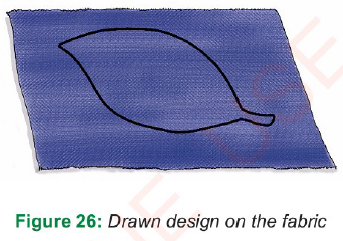 |
(iii) Wear a thimble on the middle finger.
(iv) Hold the fabric to be sewn as shown in Figure 27.
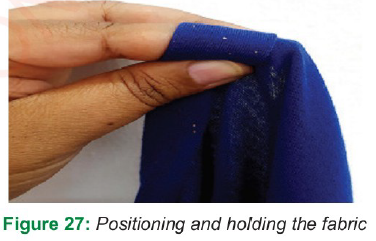 |
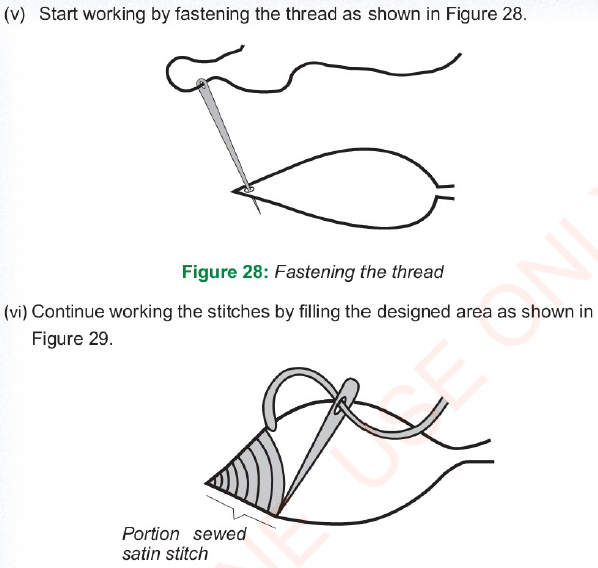 Figure 29 : Working satin stitches |
 |
Repairing garments
Repairing garments involve sewing a worn out part of the garments to maintain or change their use. Repairing makes them neat and attractive. It is also important to repair clothes to prevent further wearing out and to reduce the costs of buying new ones. Sometimes, clothes are worn out too much to the extent that they cannot be repaired. They can thus be used for another purpose. For example, the worn out item can be used for mopping, dusting, making pillow cases and changing trousers to shorts or a dress to a skirt. Different ways such as re-stitching darning, patching, and changing usage can be used to repair worn out clothes.
Re-stitching: This method involves repairing the worn out seam using needle and thread. The colour of the thread should match the colour of the material. Permanent stitches such as back stitch can be used to restitch the worn out seam.
Darning: Darning involves repairing a worn out area such as a hole by filling it with thread using the needle. These are worked when the garment has worn thin but before a hole has appeared.The following points have to be considered when daming:
1. Work all darns on the wrong side of the material if possible.
2. The thread used should match the garment in terms of colour and texture.
3. The needle should be long enough to allow a whole row of stitches to be worked at once.
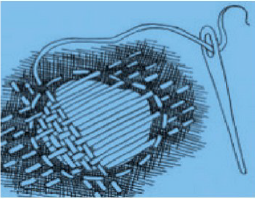 Figure 31: A hole darned fabric |
4. Darn up and down, picking up all loose loops as shown in Figure 31.
5. Leave loops at the end of each row in order to allow the garment to stretch as shown in Figure 32.
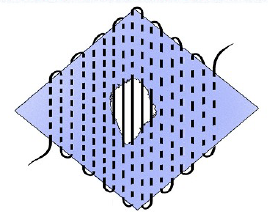 Figure 32 : Loose loops |
(6) The completed dam must be large enough to cover the hole and the surrounding wom out parts.
Patching: This method involves repairing the garment using a patch of fabric and thread to cover the worn out area. The general rules for working patching are as follows:
1. The colour and texture of the patch should be similar to the garment to be repaired as shown in Figure 33. Do not use a new patch fabric for mending a wom out area.
2. The colour of the thread to be used should be similar to Figure 33: A patched fabric the colour of the clothes to be repaired.
3. The patch must be large enough to cover the hole and the thin part surrounding it.
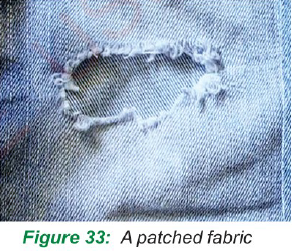 | 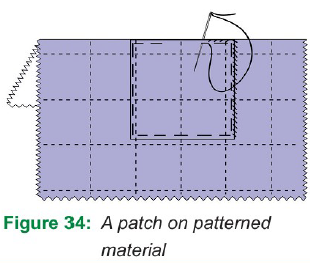 |
4. Patches on patterned material are placed on the right side of the material in order to match the design as shown in Figure Figure 34:
Attach buttons on the cloth
Attach buttons on the garment is one way of repairing the garment. It is important for a pupil to understand the proper way of attaching buttons. Different types of buttons are used on different clothes. Examples of buttons are flat buttons with two or four holes and buttons with shank. Repeated stitches are used to secure buttons properly.
The following are important points to consider when attaching buttons:
1. The colour of the thread should match with the button rather than with the garment.
2. Select the size of the needle according to the size of the button hole.
3. The distance from the edge of the fabric and mark should not be less than the width of the button.
4. Replace the button immediately after being moved out.
Steps to be followed in sewing a button with two holes
(a) Put a mark for the button position.
(b) Position the button on the fabric at a distance of about 1 cm from the edge.
(c) Thread the needle.
(d) Fasten the thread on the right side of the garment as shown in Figure 35.
(e) Sew through the first hole as shown in Figure 36.
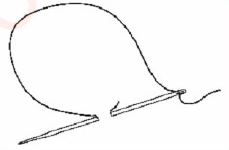 Figure 35: Fastening the thread | 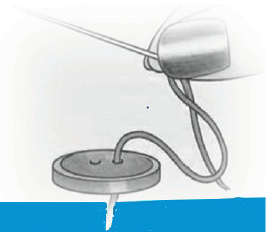 Figure 36: A thread through the first hole of the button |
(f) Push the threaded needle to the next hole down through the fabric and pull the needle to the first point of the thread towards the first hole as shown in Figure 37. Make sure you hold the button in place so it does not move.
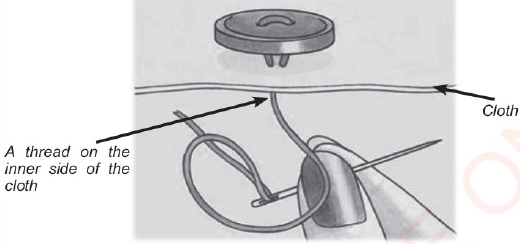 Figure 37: Sewing a button |
(g) Secure the button by repeated stitches in the fabric.
(h) The stitches should be fairly loose so that a stem or shank is formed between the button and garment as shown in Figure 38.
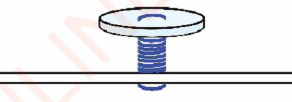 Figure 38: Worked button stem or shank |
(j) Finish neatly by means of a bar on the wrong side and fasten it as shown in Figure 39.
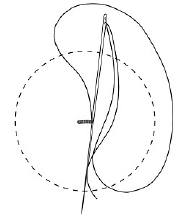 Fig. 39 Fastening off the thread |
| Activity 2 1. Make a sample of even tacking stitch and hemming stitch.2. Re-stitch a worn out garment using back stitches. 3. Attach buttons on double layers of the fabric. 4. Make a sample of darning. |
Clothes are constructed fabrics that are worn to protect the body, absorb sweat, and prevent people from cold and sunlight. Clothes may be soiled with perspiration, dust and other dirt deposited on them. Therefore, they should be washed frequently to keep them clean and give them a fresh smell. Clean clothes protect the body from skin diseases such as rushes. They also make a person look clean and neat.
Preparation before washingRepair clothes before washing them to avoid further damage. Replace any buttons, examine stains and remove them before washing as some stains are hardened by the heat from water, sun and iron. Close zippers and fasteners as they may damage the fabric if they are left open. Empty the pockets by removing everything from them to avoid damaging the clothes, objects, and the washer. Sort out the clothes according to their nature, colour fastness and finish. Soak those which need soaking in order to loosen up dirt. Collect necessary equipment for washing.
Steps to be followed in washing a white shirt
(a) Prepare everything required before starting to wash.
(b) Put enough warm water and soap in a washing basin.
(c) Remove all items from the pocket.
(d) Soak the shirt in water with detergent for about ten or twenty minutes for easy cleaning. If the shirt is too soiled, soak it overnight.
(e) Start washing it gently by rubbing on the collar, calf, pocket, hemming and the underarm. Make sure the dirt has come out before washing the remaining parts of the shirt.
(f) Rinse the shirt with clean water to remove all traces of soap and dirt. If the shirt is not rinsed thoroughly when washed, it gradually becomes discoloured, and its fibre becomes weak.
(g) Properly hang out the shirt direct to the sunlight using pegs as shown in Figure 40.
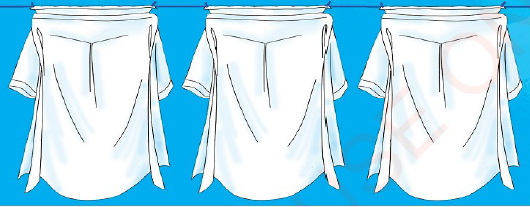 Figure 40: Hanging out washed white shifts |
Washing coloured clothes
These may be plain or printed clothes. The following procedures should be followed:
(i) Prepare a solution of warm water of about 40 oc and detergent.
(ii) Insert clothes in the prepared solution and gently rub them starting with the belt, pockets, and hemming.
(iii) Avoid rubbing them hardly to prevent the colour from running out. (iv) Rinse well in clean water. If the colour comes out during washing, add salt in the rinsing water to help fix the problem.
(v) The last rinsing water should be plain without salt. Vinegar or lemon juice may be added to the last rinsing water to brighten the colour. 1 table spoon of vinegar or lemon juice to 4.5 litres of water may be used.
(vi) Carefully wring the clothes and hang them on a line, in a shade to avoid direct sunlight which normally affect the colour.
Note: It is important for a pupil to wash and take care of school uniforms in order to look clean and neat.
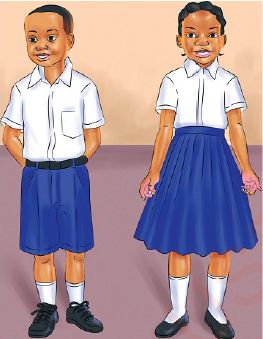 Fig. 44 Pupils wearing clean and neat school uniform |
Activity 3
When at home, wash your school uniform following proper procedure.
| Exercise Answer the following questions: 1. Mention four steps to sew running stitches. 2. What do you need to consider when attaching buttons on school uniforms? 3. Draw a picture for a satin stitch. 4. What can be done with worn out clothes? 5. What are the methods that can be used in repairing worn out clothes? |
The need for proper and adequate sanitation in promoting health should be emphasized. Cleanliness ofthe residence and public areas is important for health. It enhances fresh air and protection from diseases.
Everybody has to play his or her role in preventing diseases due to inadequate cleanliness. Poor disposal of refuse can attract insects and harmful animals. Therefore, it is important to clean our environment and maintain sanitation by ensuring the following:
1. Proper cleanliness of our house and its surroundings
2. Proper methods of disposing refuse
3. Adequate control of household pests
4. Well ventilated and uncrowded housing for family members
5. Proper use of lavatories
Daily cleaning of the floorA floor is a flat surface in the house on which people walk. It can be a natural floor or a man made floor with concrete, wood, ceramic tiles or marble. Floors need to be carefully maintained and cleaned regularly to last longer and look attractive. Removing dirt and dust prevents insects that can cause illness and allergies. Dirty floors especially in the kitchen and bathroom may lead to accidents. A floor should be cleaned according to its type. For example, a concrete floor is scrubbed with soap and water; a wood floor is polished or treated according to the finish; plastic tiles or sheets are mopped with warm, soapy water and they may be polished.
Natural floors (Earth or sand)
These are made up of soil or mud. They are common in rural areas. They are cheap to construct and maintain. They have the disadvantage of being dusty, and they can easily harbour dangerous insects and pests.
Caring and cleaning natural floorsNatural floors should be re-surfaced regularly to keep them in good conditions and prevent cracks which may harbour insects and pests. Natural floors should be cleaned regularly. The tools and materials used to clean natural floors include water, broom, dust pan, and dust bin.
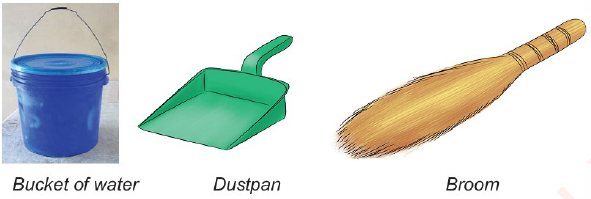 Figure 42: Tools for cleaning natural floors |
Steps to be followed in cleaning natural floors
(a) Pick up any waste paper and move furniture to the centre, if necessary.
(b) Sprinkle a little water over the floor to prevent dust from spreading while sweeping. Use a soft brush or broom for sweeping to prevent wearing out of the floor and raising of too much dust.
(c) Sweep the floor starting from the furthest end towards the door. (d) Collect all dirt using the dust pan and dispose it properly depending on the type of dirt.
(e) Re-arrange the furniture in the room.
(f) Dust the surface of all furniture using a duster.
Note: Disinfect regularly to reduce the risk of jiggers and fleas.
Concrete floorConcrete floors are made up of a mixture of cement and sand. These floors are well constructed and durable. They are difficult to be damaged and easy to maintain.
Tools and materials for cleaning the concrete floorThe tools and materials used for cleaning the concrete floor are a soft broom, dust pan, bucket of water, water, soap, brush, and mop.
 Figure 43: Tools and materials for cleaning a concrete floor |
Steps to be followed in cleaning a concrete floor
(a) Sweep the floor starting at the corners of the house towards the door.
(b) Collect dirt using a dustpan and dispose it in a dustbin or garbage pit ready for burning, or burying depending on the type of dirt.
 Fig. 44 Pupil mopping concrate floor |
(c) Wipe the dust off all surfaces in the room using a soft clean cloth.
(d) Pour soapy water on the floor and scrub the floor using a brush.
(e) Dry the floor by using clean water and a mop.
Note: When you want to do weekly cleaning or special cleaning, move aside some of the fumiture and clean your floor as described. After cleaning the floor, rearrange all moved furniture as you like. You should wipe dust and remove cobwebs from the furniture and surfaces. Clean all the tools used for cleaning and leave them to dry before storing.
Cleaning the bedroomA bedroom is a room a person uses for sleeping. A clean bedroom makes a person feel calm and relaxed while sleeping. A dirty room can cause illnesses. For example, a room with a lot of dust can cause flu and allergies. Therefore, it is important to clean our bedrooms for better health. Cleaning the bedroom can be done daily, weekly, or occasionally. Daily cleaning involves wiping dust from the surfaces, making your bed, sweeping, and mopping the floor.
Steps to be followed in doing daily cleanliness in the bedroom
1. Open the curtains and windows to allow air circulation.
2. Wipe the dust off the surfaces such as of the dressing table, bed and windows.
3. Sweep the floor, starting from the corner and under the bed, towards the door.
4. Collect dirt using a dustpan and dispose it in the dustbin or garbage pit.
5. Wipe off the dust again.
6. Make the bed.
7. Mop the floor depending on its type.
8. Arrange things such as shoes, clothes, and cosmetics properly in the room.
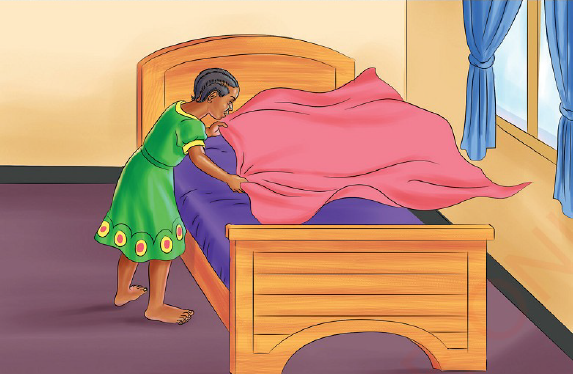 Fig. A pupil making her bed |
Managing Waste
Waste is any dirt that can affect our health and surrounding. Waste can be solid, liquid, or gas. Each of these requires different methods to dispose. Poor waste disposal can result into diseases such as cholera and dysentery. It can also cause injuries. There are two types of wastes: wastes that do not decompose and wastes that decompose.
1. Wastes that do not decompose These include pieces of glass, iron, tins, iron sheets, plastic utensils, needles and razor blades. Figure 46 is illustrative.
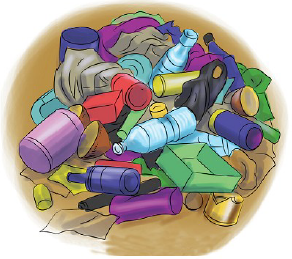 Figure 46: Wastes that do not decompose |
2. Wastes that decompose These may include boxes, food remains, pieces of paper, worn out garments, grasses, used sanitary pads as shown in Figure 47. Note that some materials used for making sanitary pads can decompose.
Both types of wastes can be managed differently using specific containers made of different materials before disposal.
 Figure 47: Wastes that decompose |
Examples of these containers are dustbins, specific waste bags, and specific waste disposal sites. Each type of waste should be disposed in a different bin for easy management.
 Figure 48: Bins for keeping different types of waste |
Effect of poor waste management
(a) It leads to environmental pollution.
(b) It attracts insects and germs that can cause health problems.
(c) It can cause injuries, such as cuts with pieces of glass.
(d) It can cause diseases such as cholera and dysentery.
(e) It can cause a bad smell in the surrounding.
Activity 5
Cleaning the school environment and disposing waste.
1. Clean the school environment. Collect all waste and separate it properly.
2. Dispose the waste properly.
Exercise
A. Put ✔ for a decomposed waste and X for a undecomposable waste.
| Waste | Mark |
| 1. Pieces of iron | |
| 2. Papers | |
| 3. Grass | |
| 4. Pieces of glass | |
| 5. Food remains | |
| 6. Ice | |
| 7. Razor blade | |
| 8. Used cotton | |
B. Write TRUE for a true statement and FALSE for false one.
1. It is important to bath every day to prevent skin diseases. . . . . . . . . . . . . . .
2. It is recommended to use water and a mop for cleaning a natural floor. . . . . . . . . . . . . . .
3. We use only water and a broom to clean a concrete floor. . . . . . . . . . . . . . .
4. Washing and drying school uniforms properly make therr look neat and last longer. . . . . . . . . . . . . . .
5. Running and hemming stitches are similar. . . . . . . . . . . . . . .
6. A thimble is a tool worn on the middle finger by a tailor when working stitches. . . . . . . . . . . . . . .
C. Answer the following questions:
1. Mention four effects of poor waste management.
2. List three signs of puberty in boys and girls.
3. Write three reasons for washing school uniforms.
4. Mention three things to consider when washing school uniforms.
5. Mention two types of wastes. 6. Why is it advisable to sprinkle water on the natural floor before cleaning?
7. Describe the steps to be used in cleaning a concrete floor.
Vocabulary
Detergent A liquid or powder that helps to remove dirt for example from clothes or dishes
Fabric Material made by weaving wool. cotton, silk. used for making clothes and articles
Maturity The quality of thinking and behaving in a sensible, adult manner
Rinse To remove soap from an item such as a cloth using clean water after washing
Stitch One of the small lines of thread that you can see on a piece of fabric after it has been sewn
www.learninghubtz.co.tz
Hub App
 For Call,Sms&WhatsApp: 255769929722 / 255754805256
For Call,Sms&WhatsApp: 255769929722 / 255754805256
 For Call,Sms&WhatsApp: 255769929722 / 255754805256
For Call,Sms&WhatsApp: 255769929722 / 255754805256
WHATSAPP US NOW FOR ANY QUERY
App Ya Learning Hub Tanzania







